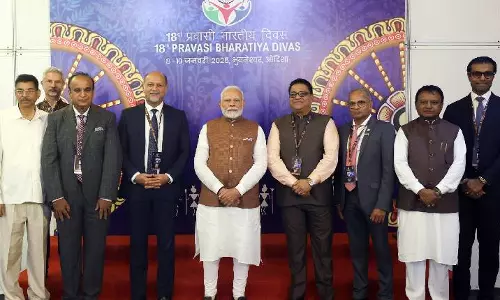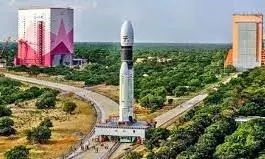
ISRO postpones space docking experiment for second time due to technical challenges
text_fieldsThe Indian Space Research Organisation (ISRO) has delayed its ambitious Space Docking Experiment (SpaDeX) for the second time, citing unexpected technical issues.
The mission, originally slated for Tuesday and rescheduled for Thursday, has been postponed indefinitely as the space agency works to address an excessive drift between the two mission satellites.
In a statement shared on X (formerly Twitter) on Wednesday, ISRO announced that during a maneuver to reduce the distance between the satellites to 225 meters, the observed drift exceeded expectations. "The planned docking for tomorrow is postponed. Satellites are safe. Stay tuned for updates," ISRO wrote.
Earlier, the experiment was postponed on Tuesday to allow further ground simulations after an abort scenario was identified.
The SpaDeX mission aims to demonstrate key technologies for spacecraft rendezvous, docking, and undocking using two 220-kg satellites. These capabilities are critical for future space missions such as satellite servicing, space station operations, and interplanetary exploration.
"This is a milestone in advancing India's capabilities in space docking," ISRO noted. Currently, only the US, Russia, and China have perfected this complex technology.
The experiment involves two satellites orbiting 470 km above Earth at a speed of 28,800 kmph - 10 times the speed of a bullet. Despite their rapid movement, their relative velocity is zero, making them appear stationary to each other.
During docking, the chaser satellite will gradually approach the target satellite, reducing the distance in phases: from 20 km to 5 km, then to 1.5 km, 500 m, 225 m, 15 m, and finally 3 m. At a speed of 10 nm (nanometers) per second, the chaser will latch onto the target, completing the docking process.
Once docked, the satellites will be tested for power transfer between them and controlled as a single spacecraft. Success will be declared after both docking and undocking are completed, allowing the satellites to function independently again.
ISRO's Polar Satellite Launch Vehicle (PSLV) carried the twin satellites into a 470-km circular orbit on December 30, 2024. Since then, meticulous testing and calibration have been underway to ensure the safety and precision of the docking process.
ISRO chief S Somanath emphasized that the exercise would only proceed after all sensors, algorithms, and scenarios have been thoroughly validated through rigorous ground simulations.











